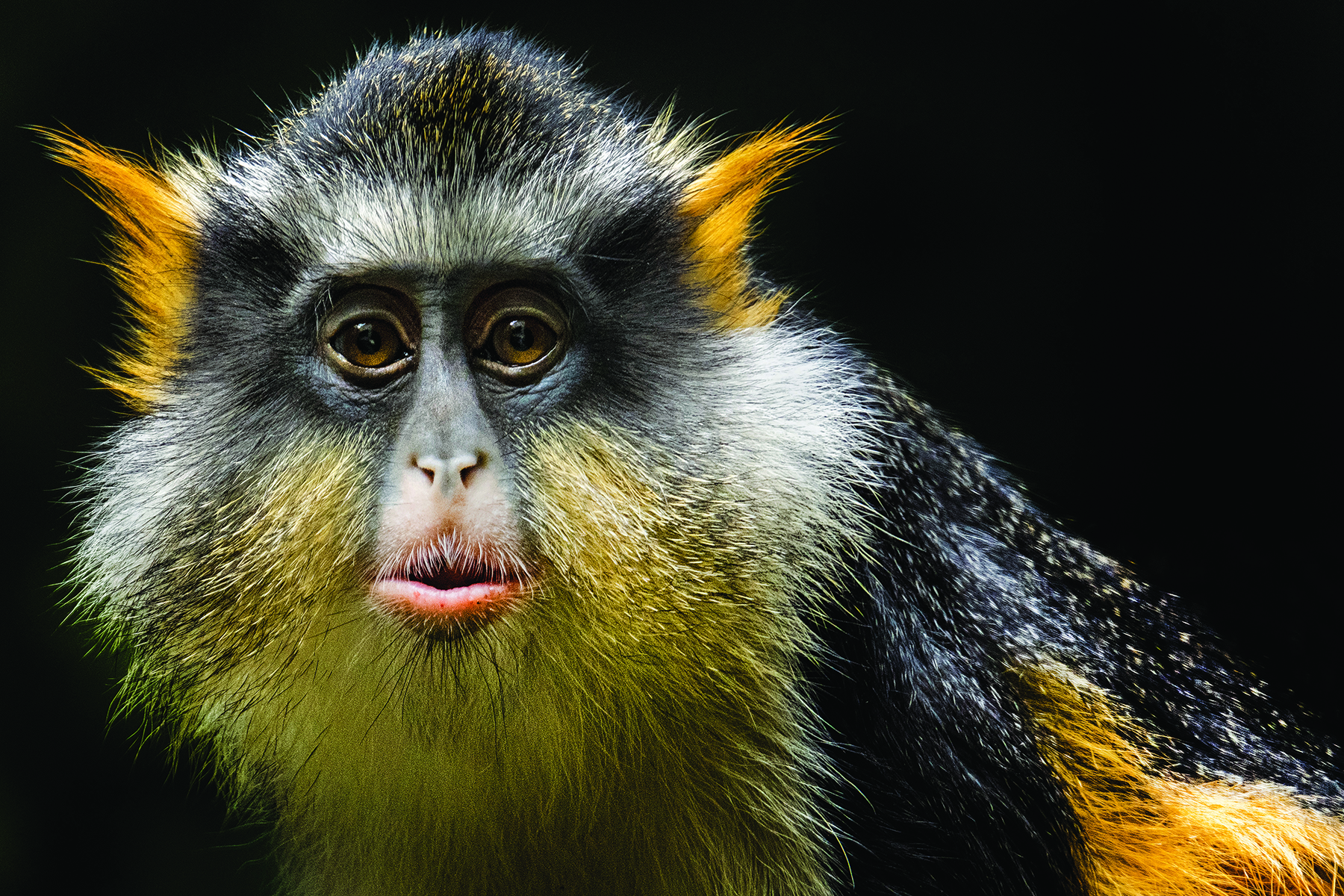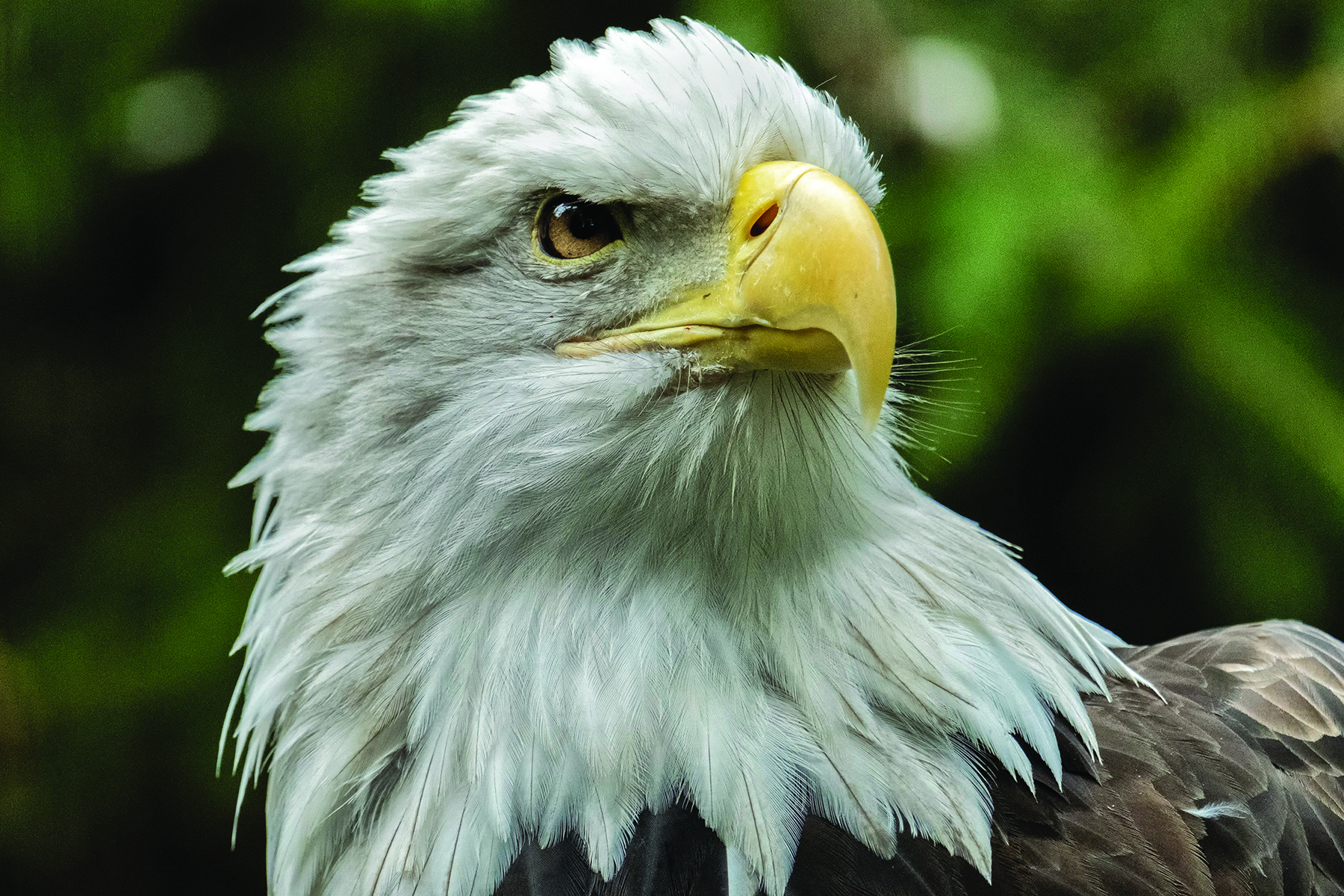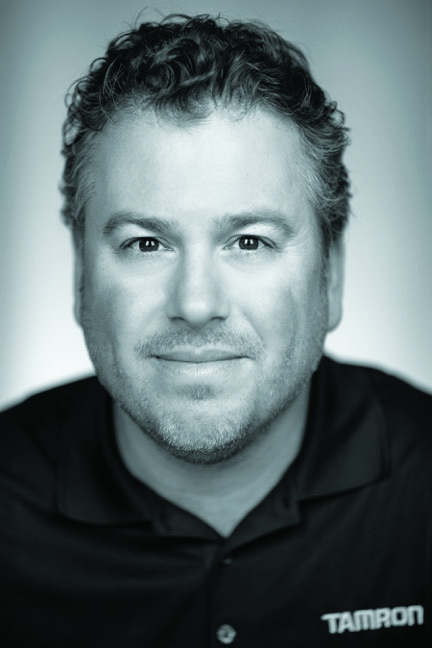
6 minute read
PORTRAIT MENAGERIE WITH KEN HUBBARD
Ken Hubbard’s 150-500mm VC zoom helps him capture the Bronx Zoo’s residents.
The long winter is mostly over, and creatures great and small in the wild are emerging from hibernation. You’re also likely to witness increased activity at your local zoo or animal preserve, offering perfect opportunities to hone your non-human portrait skills. You’ll want a fast, sharp lens with enough reach to capture animals hanging back in their enclosures, in a compact package so you won’t be weighed down as you trek from exhibit to exhibit. As Ken Hubbard discovered on a recent trip to New York City’s Bronx Zoo, the Tamron 150-500mm Di III VC VXD ultra-telephoto zoom lens for Fujifilm X-mount is the ideal lens for this kind of excursion.
“Fuji cameras feature APS-C crop sensors, so you’re now talking the equivalent of a 225mm-750mm lens in a very small, lightweight package,” Ken notes. “That’s a big advantage at the zoo, because even though you’re often able to get quite close to the animals, there can be some stubborn ones that keep their distance in the enclosure and aren’t as close as you’d like them to be.” A versatile lens like the 150-500mm allows you to zoom in and crop out distracting elements, which can prove useful when lions, gorillas, or birds of prey are perched in front of tree branches, fencing, or other busy backgrounds. With an MOD of 23.6 inches at the 150mm end and 70.9" at the 500mm end, plus a maximum magnification ratio of 1:3.1 at the 150mm end, the 150-500mm also offers excellent up-close shooting capabilities.

Tamron 150-500mm | Focal length: 500mm Exposure: F/6.7, 1/200 sec., ISO 1250
Thanks to the 150-500mm’s VXD linear motor focus mechanism, photographers can be assured of high-speed, high precision autofocus. The sharpness aided by Tamron’s proprietary Vibration Compensation (VC) technology and excellent image quality across the entire zoom range allows you to create crisp animal portraits, whether it’s showing off the details in a bald eagle’s feathers or the pensive stare of a Wolf’s guenon monkey. With a length of just 8.3", a maximum diameter of 93 inches, and a weight of 60.3 oz. (60.8 oz. for Sony), the 150-500mm allows for comfortable ultra-telephoto photography for your entire day at the zoo.

Tamron 150-500mm | Focal length: 299mm Exposure: F/6.3, 1/100 sec., ISO 1250
PHOTO TIPS: ZOO PORTRAITS
1 Get to the venue early.
Many zoos have kept the time-specific reservations they started using during the pandemic, meaning you make an appointment for a set time to arrive, then stay as long as you like. If you grab that very first slot, you’ll avoid the crowds seen later in the day. Plus, as one of the only humans on the other side of the fence or glass, you might attract the attention of the animals and prompt an interaction you wouldn’t get otherwise.

Tamron 150-500mm | Focal length: 500mm Exposure: F/6.7, 1/160 sec., ISO 640
2 Look for the light.
Most zoos will have tough lighting conditions, where the subject will be in either bright, direct sunlight or in an area with too much shade. Study the situation closely and watch the animals’ movements as they pass through the shade and sunlight. It may take some time, so you’ll have to be patient, but most animals will eventually move to a spot where they’re well lit.
3 Make eye contact.
Wait for those moments where the animal is looking directly at you, and keep those eyes sharp. This makes for a more dynamic image. The viewer will look directly at the animal’s eyes and become instantly drawn into the scene. Opening up your aperture as wide as possible will soften the background so that it’s not taking the focus away from the eyes.

Tamron 150-500mm | Focal length: 500mm Exposure: F/6.7, 1/80 sec., ISO 1250
4 Use faster shutter speeds.
There are two reasons for this. First, you’ll more than likely be handholding your camera and lens at longer telephoto focal lengths, so a faster shutter speed—1/500 sec. or faster—will help you create sharp images without camera shake. Second, certain animals can sometimes move very quickly. If the shutter speed is too slow, you’ll get distracting motion blur in your subject. By once again using 1/500 sec. or better (the faster the subject, the faster the shutter speed), you’ll be able to better freeze your subject’s movement.

Tamron 150-500mm | Focal length: 376mm Exposure: F/6.3, 1/60 sec., ISO 1250
5 Create close-up images.
Most animals have very expressive faces. Filling the frame with just your subject will ensure you capture all of the details and nuances of those faces. By zooming in and eliminating the background, you’ll also get rid of any distracting elements.
6 Use a circular polarizer.
If you’re shooting through glass, glare and reflections can be among the more frustrating parts about taking zoo photography. You might have an animal in front of your camera with the best pose or expression, but the final image will show your colorful jacket reflecting off of the glass.

Tamron 150-500mm | Focal length: 474mm Exposure: F/6.3, 1/1250 sec., ISO 4000
7 Take advantage of the rubberized lens hood.
This feature on the 150-500mm lens was likely designed to keep the lens from slipping off a metal or glass counter, but it can serve you well when pressing against exhibit glass or an aquarium tank to keep the camera from slipping. By applying just that bit of pressure, it offers extra grip and keeps the lens from slipping as you’re trying to shoot.

Tamron 150-500mm | Focal length: 500mm Exposure: F/6.7, 1/320 sec., ISO 640
ABOUT: KEN HUBBARD

Ken Hubbard is the Field Services Manager for Tamron. He is responsible for the company’s events, including Tamron’s popular consumer workshop series. Ken has had nationwide gallery showings of his portrait and landscape photography and teaches enthusiasts how to take better photos at numerous events. Ken’s extensive background in the field of photography is unique and diverse. He has traveled extensively throughout the US and the result is a consistent output of breathtaking photographs that continually challenge the boundaries of the genre.
Instagram: @kenhubbardphotography







